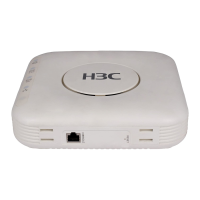14-1
z The models listed in this document are not applicable to all regions. Please consult your local sales
office for the models applicable to your region.
z Support of the H3C WA series WLAN access points (APs) for features may vary by AP model. For
more information, see Feature Matrix.
z The interface types and the number of interfaces vary by AP model.
z The term AP in this document refers to common APs, wireless bridges, and mesh APs.
14 Logging In to an AP
Logging In to an AP
You can control the WA series WLAN APs through an access controller (AC) or a unified switch
associated with the AP when the AP works in fit AP mode.
To log in to a WA series fit AP (AP for short), use any of the following methods:
z Logging In Through the Console Port
z Logging In Through Telnet
z Logging In Through SSH
z Logging In Through a Web-Based Network Management System
z Logging In Through an NMS
Introduction to User Interface
Supported User Interfaces
The AP supports two types of user interfaces: console and VTY.
z Console port: Manages and monitors users that log in via the console port. The AP provides one
console port of EIA/TIA-232 DCE type. The port is usually used for the first access to the AP.
z VTY (virtual type terminal): Manages and monitors users that log in via VTY. A VTY port is usually
used when you access the AP through Telnet or SSH.
Table 14-1 Description on user interfaces
User interface Applicable user Port used Description
Console
Users that log in through the
console port
Console port
Each AP can accommodate one
console user.
VTY Telnet and SSH users Ethernet port
Each AP can accommodate up to 5
VTY users.

